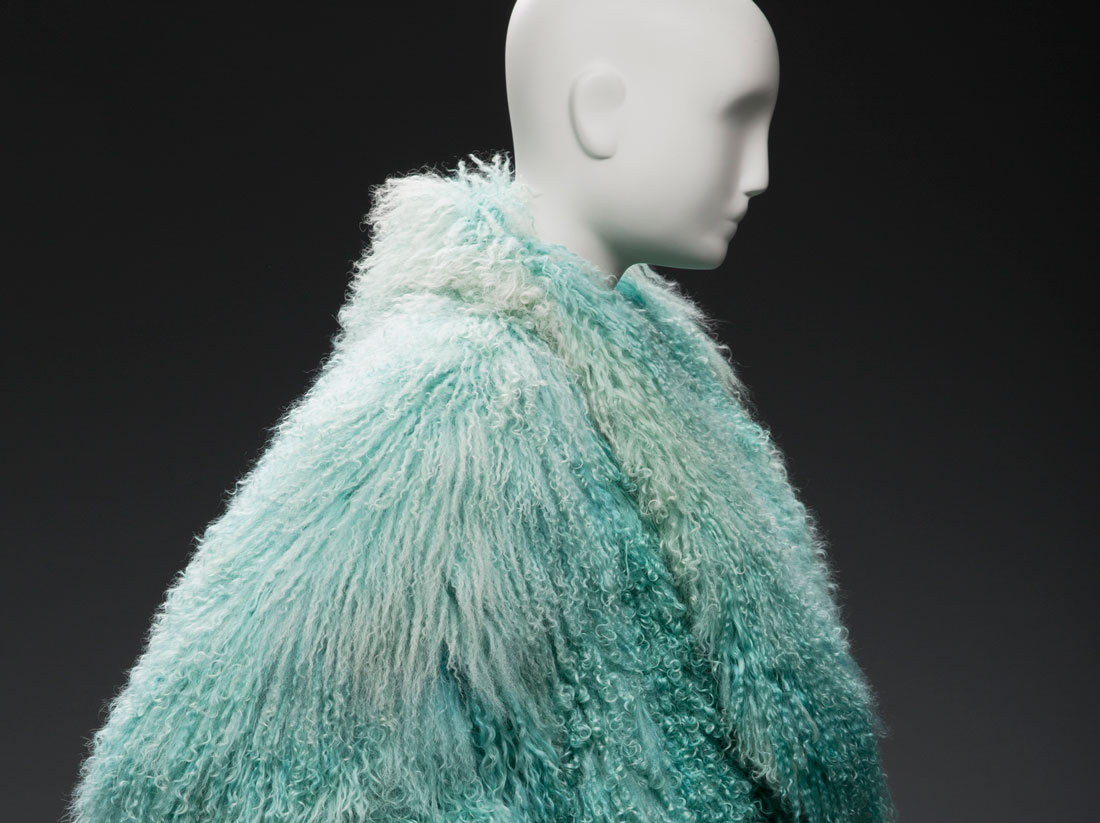By Mallory Hughes
“Upper Michigan [Avenue] will be properly designed for magnificence, dignity and character, and will be like no other
commercial thoroughfare in the world.”– Chicago real estate developer Arthur Rubloff, 1947
Imagine a time in Chicago when North Michigan Avenue, now unofficially known as the Magnificent Mile, wasn’t lined with vertical shopping malls and skyscrapers. Imagine a time, instead, when Michigan Avenue between Ontario and Oak streets was just an understated thoroughfare, linking Chicago’s bustling downtown centered at State and Madison to the residential Near North Side.
An exhibit currently on display at the Chicago History Museum, curated by Petra Slinkard, showcases the historical shift when a one-mile stretch of Michigan Avenue was turned into an “oasis of style.”
Featuring more than 25 ensembles from the Museum’s extensive costume collection, the exhibit titled “Chicago Styled” highlights more than 40 years of fashion, from the 1950s to the 1990s, from North Michigan Avenue stores.

A booming fur business in the mid-twentieth century brought multiple fur salons to North Michigan Avenue, including Alper-Richman Furs and the Carol and Irwin Ware Fur Salon. In 1953, N. H. Rosenthal Furs moved from State Street to North Michigan Avenue, where other luxury retailers would soon migrate.
The exhibit included a lynx coat from the Rosenthal salon, worn by Joyce Welfeld, wife of prominent businessman and lawyer Marvin Welfeld, to the Lyric Opera of Chicago’s lavish Annual Meeting Dinner in 1969. The knee-length coat is constructed using naturally spotted lynx fur, which has rich cream, soft brown, and sierra hues.
In the 1980s, Claude Montana’s bold-colored furs and exaggerated cuts were staples in his collection. Arlene Sheskin purchased the lightweight and voluminous blue-green lambs wool coat on display from Neiman Marcus, which opened in Chicago in 1983.
Gianni Versace opened a storefront on East Oak Street in 1986, making it Chicago’s first single-designer couture boutique as well as the largest Versace store in the world at the time. The black-and-gold evening gown featured in the exhibit is one of nine ensembles that the Italian designer donated after visiting Chicago when his namesake store opened.

The long-sleeved, floor-length dress from the Fall-Winter 1985 collection is made entirely of metal mesh, with interlocking rings and plates arranged in a lattice pattern. But the light fabric and deliberate draping prevent the gown from looking heavy, instead creating an effortless silhouette as it hangs from the body.
Garments were arranged in chronological order, highlighting how the designs evolved through the decades. Even the walls are painted with an advancing skyline of Chicago, combining the city’s fashion with its architectural changes by varying shades of purple and gray to portray new buildings as they were erected.
Perhaps the most notable aspect of this exhibit, besides the clothing, was the attention paid to details of all kinds. The many descriptive placards were stuffed with facts regarding about the garments themselves, as well as their significance in the Magnificent Mile’s changing landscape.
One placard read that a single pair of pants, from a 1970s Malcolm Starr evening ensemble, was embroidered with rhinestones and more than 100,000 pearls, weighing roughly five pounds. The company released this campaign, “Mink & Pearls,” the same year they moved their headquarters to the John Hancock Center.

Though not entirely absent, men’s fashion was seriously underrepresented. The only men’s suit on display was by Lawrence M. Pucci, a veteran tailor and designer on North Michigan Avenue. For more than 80 years, his family-owned business provided bespoke suits and more for prominent Chicagoans and celebrities alike, including Dean Martin and Jerry Lewis.
Aesthetically speaking, “Chicago Styled” was beautiful. What is there not to love in a room filled with notable fashions from decades past? The lighting, though, was dim. Had it been a bit brighter, I would have posted the 1980s Chanel cocktail dress by Karl Lagerfeld on Instagram in a heartbeat. But the dark dress faded into the gray cityscape in the flashless photograph, not nearly as illustrative of the vibrant clothes on display before me.
“Chicago Styled: Fashioning the Magnificent Mile” closes on August 16. For further information, visit the Chicago History Museum’s website.

